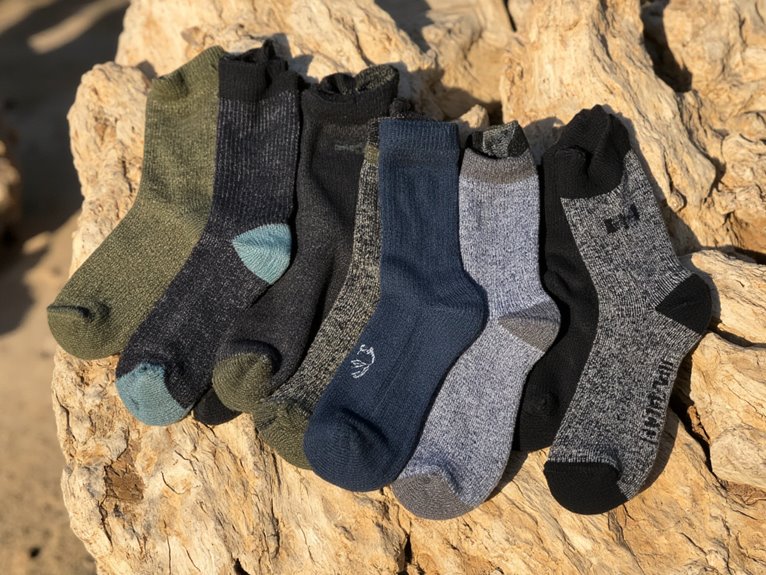What Is the Ideal Weight for Rucking?
The ideal weight for rucking depends on individual factors, including strength, endurance, terrain, and mission requirements. A well-chosen weight enables ruckers to maintain a steady pace, conserve energy, and reduce the risk of injury. Generally, a load between 15% to 30% of body weight is recommended, allowing for a balance between physical challenge and safety. However, this is just a starting point, and factors such as experience, fitness level, terrain, and environmental conditions must also be considered. Understanding these factors is key to finding the optimal weight for a successful and efficient rucking experience, and further exploration is necessary to find your personal sweet spot.
We are supported by our audience. When you purchase through links on our site, we may earn an affiliate commission, at no extra cost for you. Learn more. Last update on 22nd December 2025 / Images from Amazon Product Advertising API.
Understanding Rucking Weight Basics
Rucking, a physically demanding activity that requires carrying heavy loads over long distances, demands a thorough understanding of the ideal weight to guarantee safety, efficiency, and performance.
The ideal weight for rucking is not a one-size-fits-all solution, as it depends on various factors, including individual strength, endurance, and the terrain.
A well-chosen weight enables ruckers to maintain a steady pace, conserve energy, and reduce the risk of injury.
Recognizing that the ideal weight is a delicate balance between challenge and manageability is vital to optimizing performance.
Understanding the fundamentals of rucking weight is key to optimizing performance, preventing fatigue, and ensuring a successful rucking experience.
Factors Affecting Ideal Rucking Weight
Several key factors, including individual physical capabilities, terrain characteristics, and mission requirements, substantially influence the ideal weight for rucking.
Physical capabilities, such as strength, endurance, and agility, play a significant role in determining the perfect weight for rucking.
Terrain characteristics, including distance, elevation, and surface type, also impact the ideal weight. For example, rucking on flat, smooth surfaces may require less weight than rucking on steep, uneven terrain.
Mission requirements, including the need for speed, agility, or stealth, also influence the ideal weight.
Additionally, environmental factors, such as temperature and humidity, can affect the ideal weight for rucking.
Understanding these factors is essential in determining the ideal weight for effective and efficient rucking.
Body Weight Percentage Guidelines
Typically, a good starting point for determining ideal rucking weight is to weigh the importance of body weight percentage guidelines, which recommend that ruckers carry a load between 15% to 30% of their body weight.
This range allows for a balance between physical challenge and safety.
Carrying too little weight may not be physically demanding enough, while carrying too much can lead to injury.
For example, a person weighing 150 pounds would aim to carry a load between 22.5 pounds (15% of 150) and 45 pounds (30% of 150).
These guidelines provide a general framework for determining a suitable rucking weight, allowing individuals to tailor their load to their fitness level and goals.
Rucking Experience and Fitness Level
Most individuals find that their ideal rucking weight is influenced by their level of experience and fitness, which can substantially impact their ability to carry a load efficiently and safely.
As ruckers gain experience, they develop the strength, endurance, and technique necessary to handle heavier loads. Fitness level also plays a significant role, as those with higher levels of cardiovascular fitness and muscular strength can handle more substantial weights.
Novice ruckers, on the other hand, should start with lighter loads and gradually increase the weight as their fitness and experience improve. A realistic assessment of one's fitness and experience level is essential in determining an ideal rucking weight that balances challenge with safety, and a thoughtful evaluation is vital in ensuring that ruckers do not take on more than they can handle.
Terrain and Environmental Factors
In addition to individual factors, the terrain and environmental conditions of a rucking route substantially influence the ideal weight, as varied terrain features and weather conditions can dramatically impact the energy expenditure and physical demands of a ruck.
For instance, rucking on uneven, rocky, or steep terrain requires more energy and strength compared to rucking on flat, smooth surfaces.
Weather conditions like extreme temperatures, humidity, or wind also affect the rucker's energy expenditure.
In hot and humid environments, ruckers may need to carry more water and electrolytes, increasing their overall weight.
Conversely, in cold weather, ruckers may need to carry additional clothing and gear, adding to their load.
Understanding these factors is essential in determining the ideal weight for a ruck.
Weight Distribution and Packing
Effective weight distribution and packing are vital aspects of rucking, as they profoundly impact the overall comfort and performance of the individual.
A well-balanced load placement guarantees that the weight is evenly distributed, reducing fatigue and discomfort.
Efficient pack organization is also essential, as it enables easy access to essential items while minimizing weight shifting and instability.
Balanced Load Placement
Proper weight distribution and packing are essential components of balanced load placement, as they directly impact the rucker's comfort, mobility, and overall performance.
A well-balanced load allows for efficient energy expenditure, reduces fatigue, and prevents injuries.
To achieve ideal load placement, it is vital to distribute weight evenly throughout the pack, with heavier items positioned closest to the back and center of gravity.
This maintains stability and minimizes shifting during movement.
Additionally, packing gear in a compact and organized manner helps to maintain a low center of gravity, further enhancing balance and stability.
Efficient Pack Organization
By compartmentalizing gear into designated zones within the pack, ruckers can optimize weight distribution and packing efficiency, thereby minimizing energy expenditure and maximizing overall performance.
This approach enables ruckers to access essential items quickly and efficiently, reducing downtime and increasing productivity.
Efficient pack organization also helps to prevent gear damage and loss, as items are protected from shifting and abrasion.
A well-organized pack facilitates a smooth, uninterrupted rucking experience, allowing ruckers to focus on their mission or training objectives.
Finding Your Personal Sweet Spot
When finding your personal sweet spot for rucking, it's essential to examine individual factors that impact your ideal load.
Two key points to focus on are understanding how your body type influences your carrying capacity and determining the ideal percentage of your body weight to allocate to your rucking load.
Body Type Matters
Individuals with varying body types, including ectomorphs, mesomorphs, and endomorphs, require distinct approaches to achieving their ideal weight for rucking. Understanding your body type is crucial in determining the optimal weight for efficient and safe rucking.
Ectomorphs, with their slender builds, may benefit from carrying lighter weights to avoid fatigue and injury.
Mesomorphs, with their athletic physiques, can handle moderate to heavy weights, leveraging their natural strength and endurance.
Endomorphs, with their curvier figures, may need to focus on lighter weights and higher repetitions to avoid excessive strain on their joints.
Rucking Load Percentage
A well-calibrated rucking load percentage is essential for peak performance, as it enables you to navigate varied terrain with ease and efficiency.
This percentage represents the ideal weight of your ruck relative to your body weight.
Finding your personal sweet spot is vital, as it directly impacts your overall performance and endurance.
A general rule of thumb is to start with a load percentage between 10-20% of your body weight and adjust accordingly.
For instance, if you weigh 150 pounds, your initial load would be 15-30 pounds.
Experiment with different percentages to find the perfect balance between challenge and comfort.


